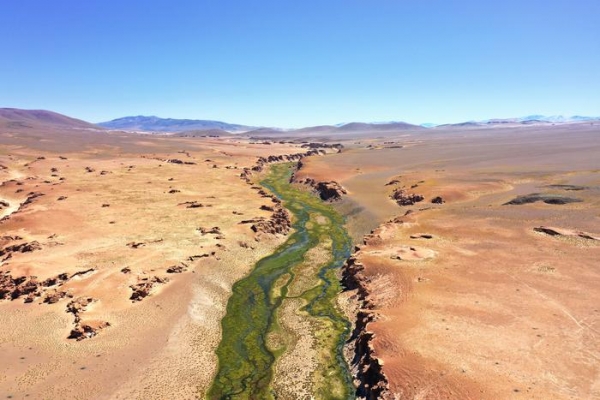A research team led by the University of Massachusetts Amherst, in collaboration with the University of Alaska-Anchorage and Columbia University, has conducted the widest-ever hydrological tracer analysis of the Dry Andes region in Chile, Argentina and Bolivia, home to the majority of the world’s lithium deposits and other elements, such as copper, critical to the green energy transition away from oil and toward electricity.
A research team led by the University of Massachusetts Amherst, in collaboration with the University of Alaska-Anchorage and Columbia University, has conducted the widest-ever hydrological tracer analysis of the Dry Andes region in Chile, Argentina and Bolivia, home to the majority of the world’s lithium deposits and other elements, such as copper, critical to the green energy transition away from oil and toward electricity. But the Dry Andes, as well as other hyper-arid regions, is also extremely sensitive to any activity, such as mining, that may disrupt the presence, composition and flow of both surface and subsurface water. Until now, however, there has been no reliable, comprehensive understanding of exactly how the hydrological systems in extremely arid landscapes work, which means that environmental regulators don’t have the information they need to best manage the mining industry and the transition to a more environmentally sustainable future. The research appears in PLOS Water.
“We’ve been thinking about water all wrong,” says Brendan Moran, the paper’s lead author and a postdoctoral research associate in geosciences at UMass Amherst. “We typically assume that water is water, and manage all water the same way, but our research shows that there are actually two very distinct pieces of the water budget in the Dry Andes, and they respond very differently to environmental change and human usage.”
Water is especially important for lithium, the crucial component of the powerful batteries in such things as electric and hybrid cars and photovoltaic systems. Lithium doesn’t like to be in solid form and tends to occur in layers of volcanic ash— but it reacts quickly with water. When rain or snowmelt moves through the ash layers, lithium leaches into the groundwater, moving downhill until it settles in a flat basin where it remains in solution as a briny mix of water and lithium. Because this brine is very dense, it often settles beneath pockets of fresh surface water, which float on top of the lithium-rich fluid below. These fresh and brackish lagoons and wetlands often become havens for unique and fragile ecosystems and iconic species such as flamingos, and they are also composed of different kinds of water—so how does one tell types of water apart?
Read more at: University of Massachusetts Amherst
A better understanding of the complex hydrology in arid regions will give environmental managers the information they need to make the best possible decisions. (Photo Credit: David Boutt)




